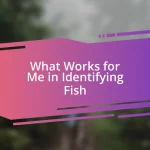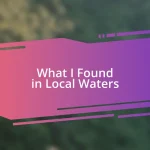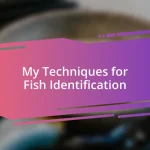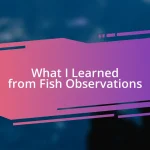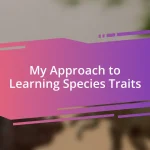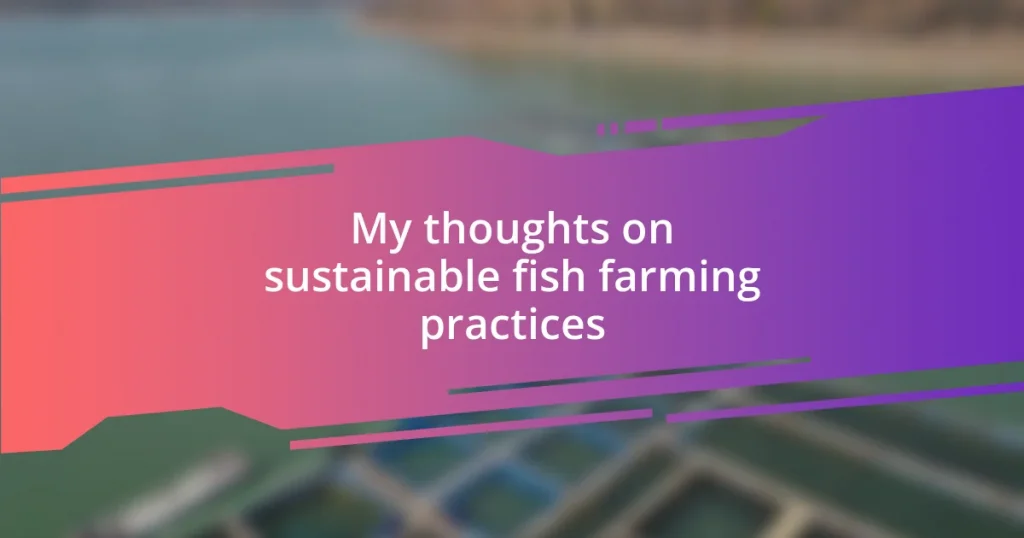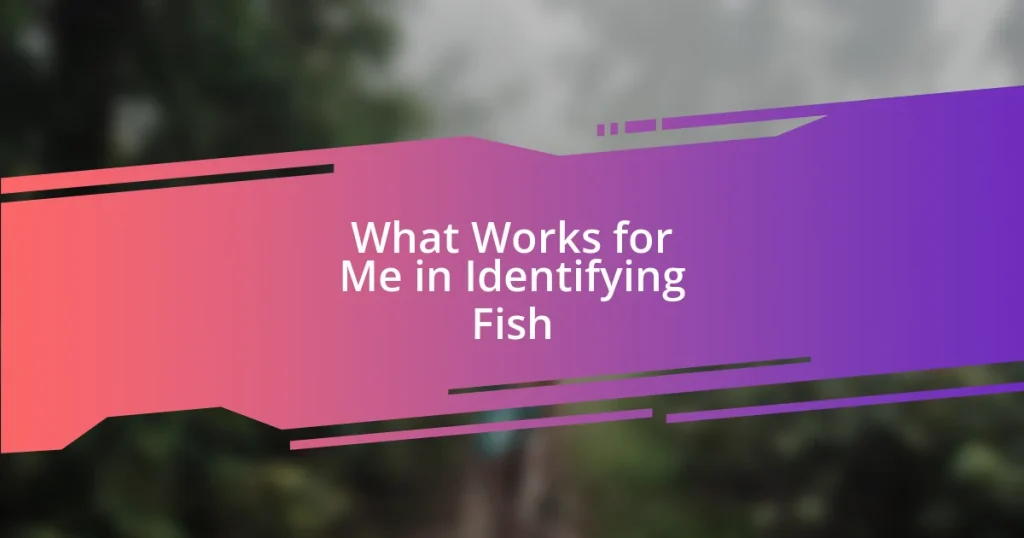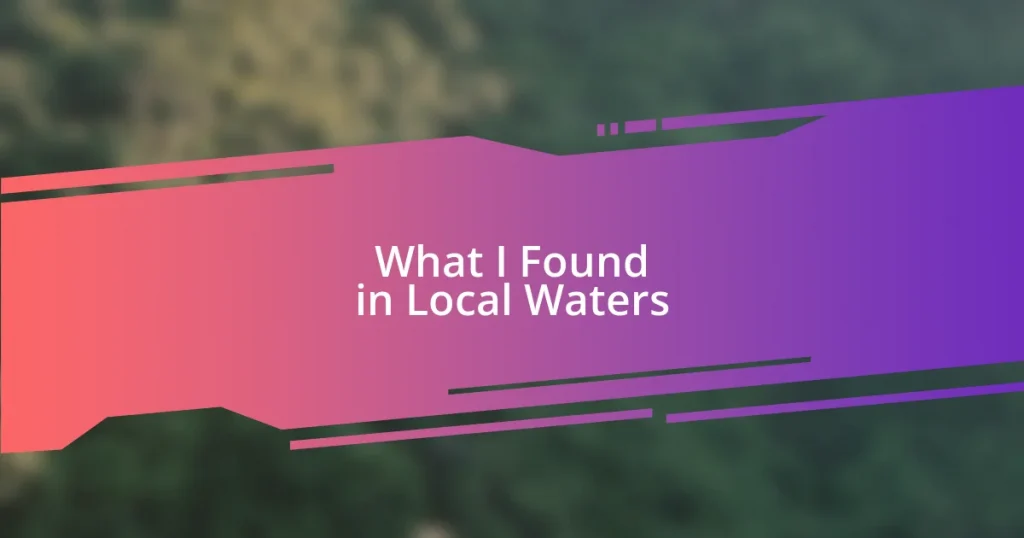Key takeaways:
- Sustainable fish farming integrates responsible practices to minimize environmental impact, enhance fish health, and support local communities.
- Innovative technologies like smart monitoring systems and recirculating aquaculture systems improve efficiency and reduce ecological footprints.
- Future trends include the rise of lab-grown fish, emphasis on local aquaculture, and adaptation strategies to combat climate change impacts on fish farming.
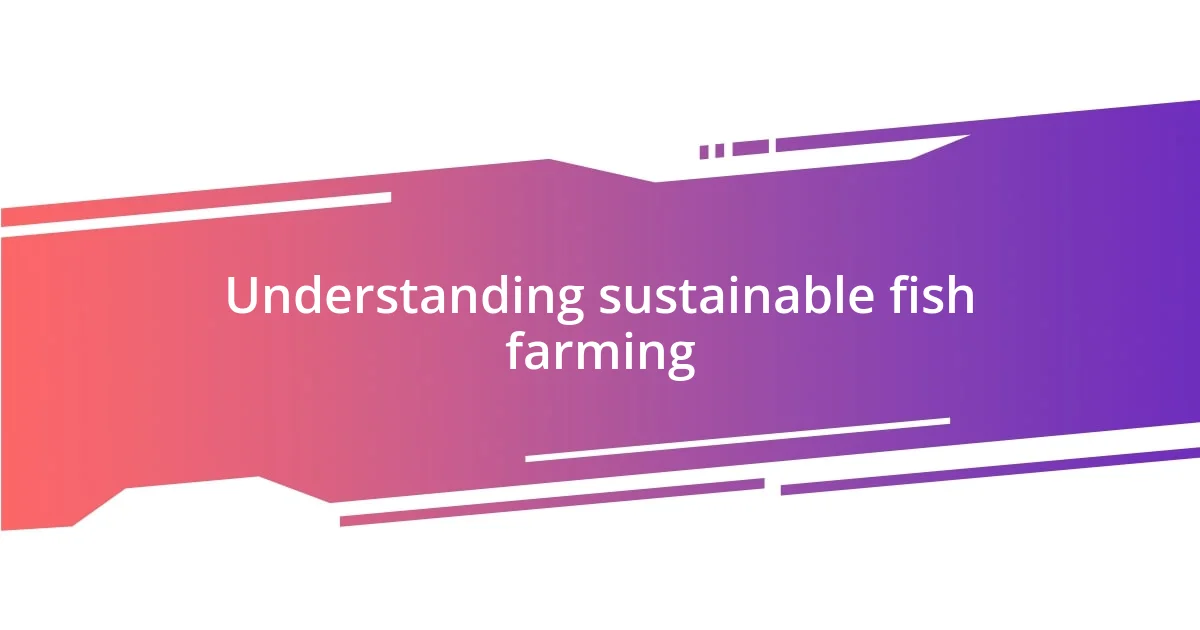
Understanding sustainable fish farming
Sustainable fish farming, also known as aquaculture, focuses on raising fish in a way that protects the environment, conserves resources, and nurtures fish populations. I remember visiting a local farm where they used integrated systems, combining plants and fish, creating a balance that felt almost magical. Wouldn’t it be amazing if all fish farms operated this harmoniously?
At its core, sustainable practices aim to minimize pollution and reduce reliance on wild fish stocks by implementing responsible feed sourcing and innovative breeding techniques. I once met a passionate aquaculturist who explained how he carefully selects feed made from sustainable ingredients. Hearing his commitment, I felt hopeful about the future of our oceans and fish populations.
Moreover, sustainable fish farming addresses social responsibility by ensuring fair labor practices and supporting local communities. I’ve engaged with local fishers who benefit from sustainable initiatives and realized how interconnected our choices can be. Do we truly understand the impact of our dietary choices on ecosystems and communities? By embracing sustainable fish farming, we can nourish ourselves while also standing up for ethical practices that benefit the planet.
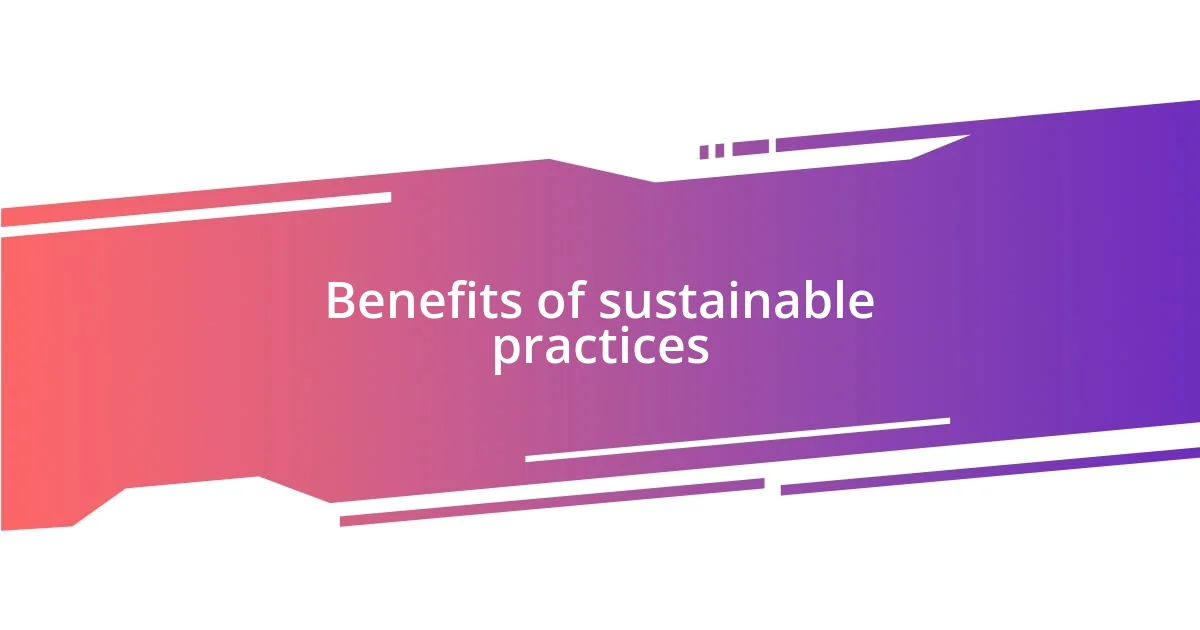
Benefits of sustainable practices
Sustainable fish farming offers remarkable advantages that resonate deeply with both the environment and communities. For instance, I’ve witnessed firsthand the transformative impact of reducing pollution through well-managed aquaculture. It’s incredible how these practices not only produce healthier fish but also aim to rehabilitate local ecosystems. The balance achieved can feel like a breath of fresh air, allowing marine life to thrive alongside human endeavors.
Here are some key benefits of sustainable practices in fish farming:
- Environmental preservation: Responsible farming minimizes habitat destruction and allows wild fish populations to recover.
- Reduced carbon footprint: Practices like recirculating aquaculture systems significantly lower greenhouse gas emissions compared to traditional fishing methods.
- Enhanced fish health: Sustainable approaches often result in healthier fish stocks, which can improve the taste and nutrition of the seafood we consume.
- Community support: By prioritizing local labor and sourcing, sustainable fish farms can support local economies and empower communities.
- Innovative techniques: The integration of technology and traditional methods leads to more efficient use of resources, reducing waste and dependency on wild stocks.
I remember visiting a community that relied on such farms. The pride they took in their work was palpable. It wasn’t just a job; it was a commitment to their land and their people. Seeing their efforts makes me grateful for the choices I have in the grocery store and reinforces the belief that supporting sustainable practices can truly make a difference for all of us.
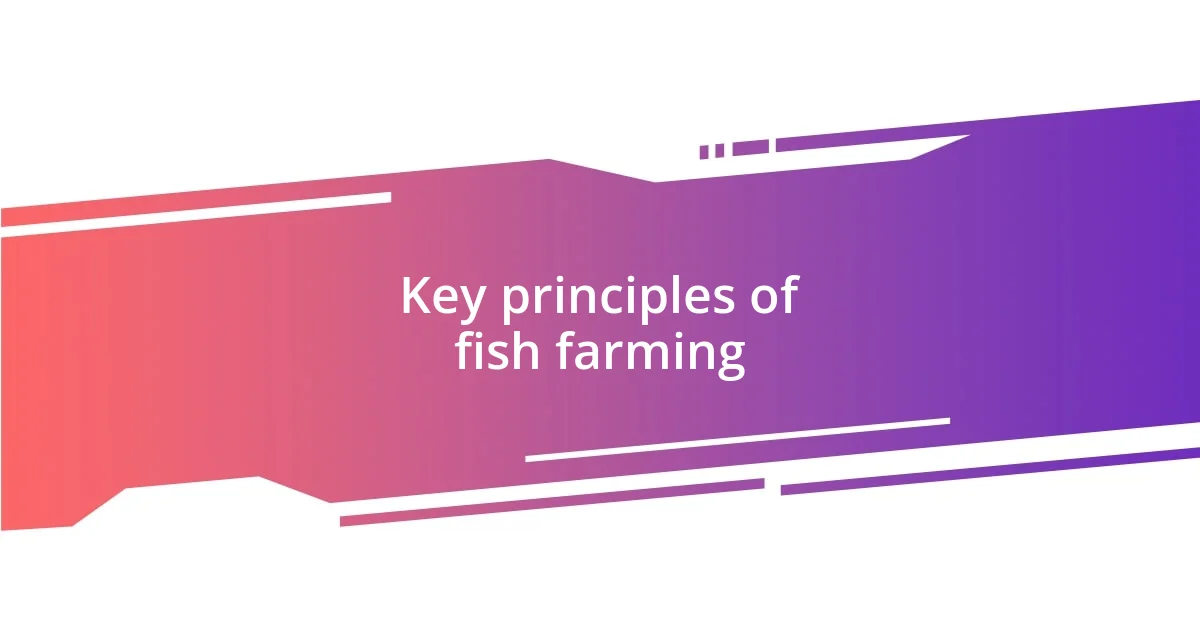
Key principles of fish farming
Sustainable fish farming is grounded in several key principles that ensure the practice is both environmentally sound and economically viable. One cornerstone is the health of the aquatic ecosystem. During a recent visit to an aquaculture operation, I was struck by the operators’ commitment to biodiversity. They cultivated not just fish, but also plants and other organisms, creating a more resilient environment. This multidimensional approach stood in stark contrast to single-species farms I’ve seen, which often struggle with disease and imbalance.
Another fundamental principle revolves around responsible feed sourcing. I’ve learned that the type of feed used can drastically affect the sustainability of fish farming. For instance, choosing plant-based feeds can minimize the pressure on wild fish stocks, which resonates with my desire to protect marine life. This was vividly illustrated during a workshop I attended, where an industry expert shared how a shift to sustainable feed formulations boosted his farm’s yield while also reducing its ecological footprint. It made me realize how our choices in aquaculture can ripple through ecosystems.
Lastly, I believe that community involvement is vital in sustainable fish farming. The farms I’ve encountered that prioritize community engagement often have a deeper connection with their surroundings. I once spoke with a farmer who narrated how he trains local youth in eco-friendly practices, fostering a sense of stewardship. This approach not only benefits the ecosystem but also tightens the bond within the community. It’s inspiring to think about how sustainable fish farming can empower local people, turning them into guardians of their natural resources.
| Key Principles | Description |
|---|---|
| Ecosystem Health | Maintaining biodiversity to create a resilient environment. |
| Responsible Feed Sourcing | Incorporating sustainable feed to reduce wild stock depletion. |
| Community Involvement | Engaging local populations to promote stewardship and sustainability. |
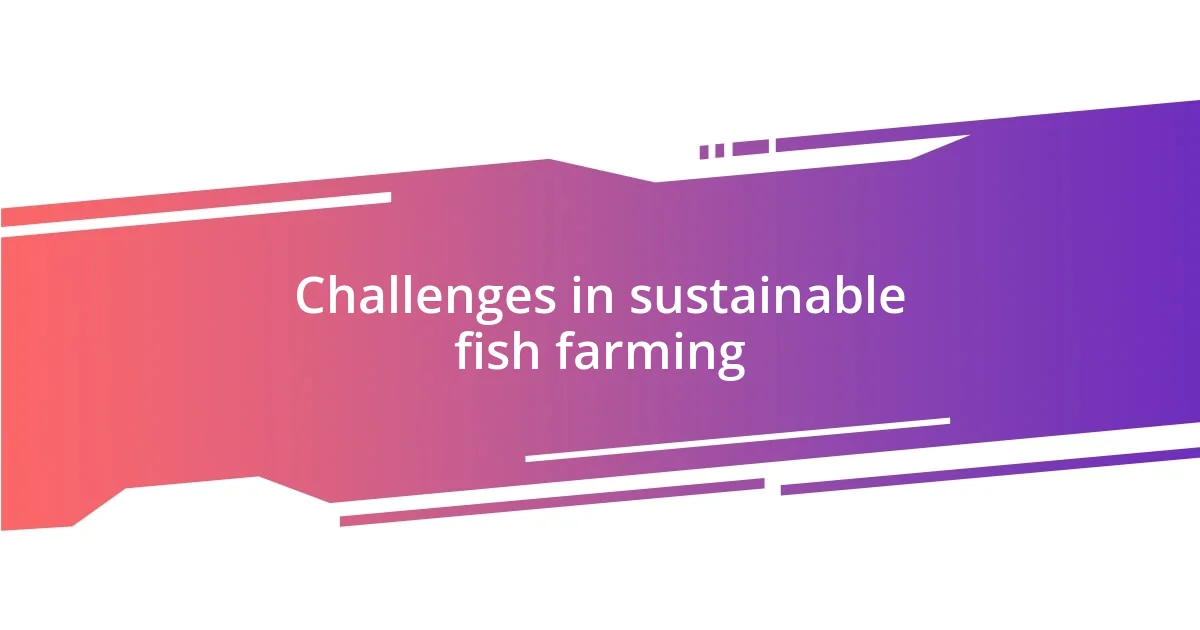
Challenges in sustainable fish farming
When I think about the challenges in sustainable fish farming, one significant hurdle comes to mind: disease management. It can be such a tricky balance. I recall visiting a farm where they faced a sudden outbreak of a disease that wiped out a large portion of their stock. It made me realize how vulnerable these operations can be and the pressure they must feel to act quickly while still upholding sustainable practices. The reliance on antibiotics often contradicts their core principles, creating a moral quandary that many farmers grapple with.
Another substantial challenge is the sourcing of sustainable feed. During a discussion with a farmer, he expressed his frustration about the lack of availability for high-quality, responsibly-sourced feed. I could see the concern in his eyes as he pondered how to keep his fish healthy without depleting wild populations. It struck me that our demand for seafood can sometimes push farmers into difficult positions where their choices can have broader ecological implications. Have you ever considered the impact of what goes into your food?
Lastly, there’s the economic viability of sustainable practices. While I admire the commitment to responsible methods, it isn’t lost on me that many farms struggle financially. I once met a passionate aquaculturist who believed wholeheartedly in sustainable practices, yet felt financially strapped at every turn. How do we reconcile the desire for sustainability with the harsh economic realities of farming? It’s a pressing issue that requires innovative solutions, and one that, I believe, deserves our attention if we hope to ensure the future of both fish farming and our oceans.
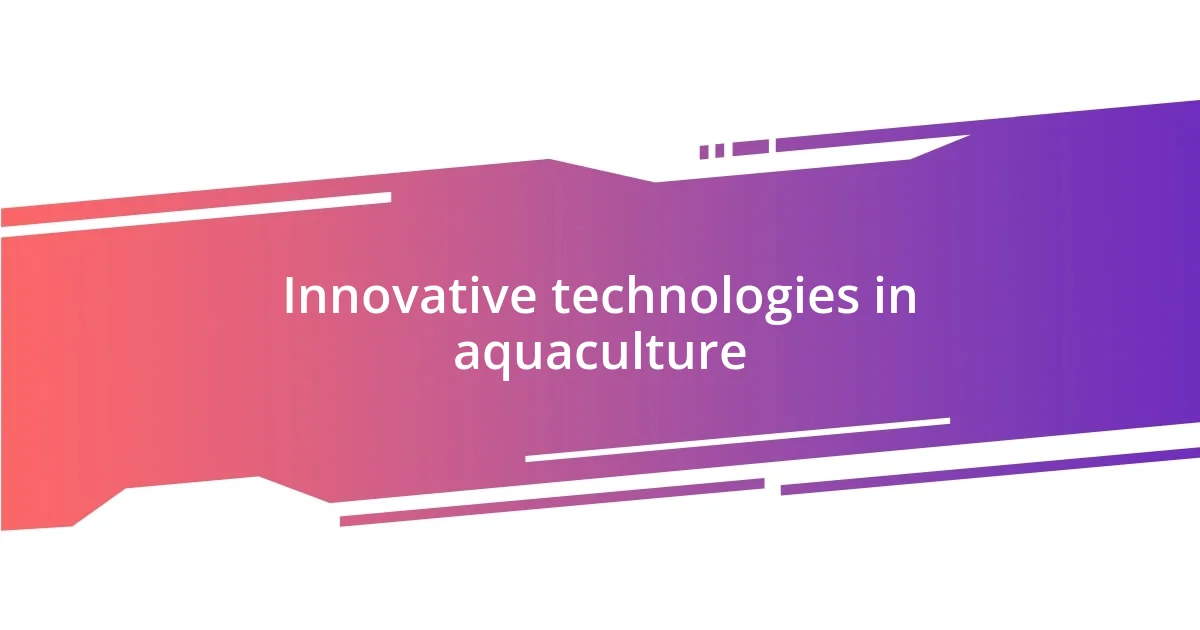
Innovative technologies in aquaculture
Innovative technologies play a crucial role in transforming aquaculture practices. For instance, I remember visiting a facility that implemented smart monitoring systems, using sensors to track water quality in real time. It felt almost like watching a high-tech lab in action, and I was amazed at how these advancements not only enhanced fish health but also minimized resource waste. This kind of precision farming is essential in our quest for sustainable practices.
Another noteworthy technological advancement is the use of automated feeding systems. I encountered a farm where feeding was done through precise algorithms based on fish growth rates rather than fixed schedules. The owner shared how this method saved them significant costs and reduced feed waste. Isn’t it fascinating to think that, with just a bit of technology, we can make aquaculture more efficient and kinder to our planet?
Moreover, the integration of recirculating aquaculture systems (RAS) has gained traction. I vividly recall an enlightening discussion with an aquaculturist who championed RAS for its ability to recycle water and nutrients, drastically reducing the environmental impact. This approach not only conserves resources but also mitigates the threat of disease transfer between wild and farmed fish. It’s inspiring to see how innovation in technology can align with our aspirations for a sustainable future in aquaculture.
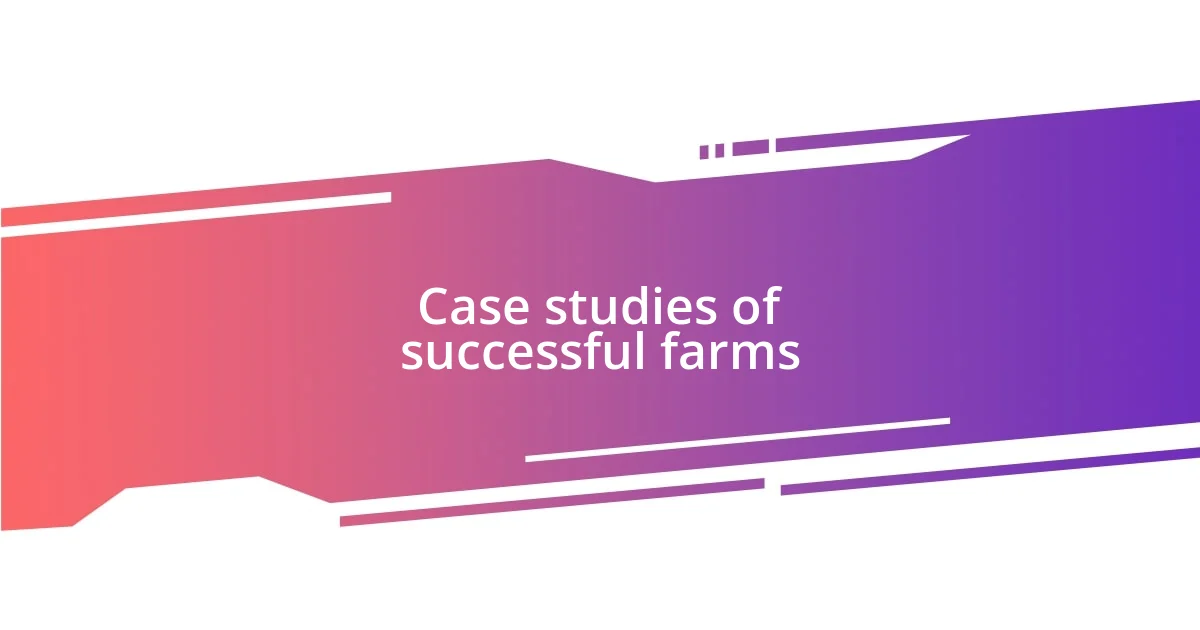
Case studies of successful farms
One remarkable case that stands out in my mind is a farm in Norway that transitioned to fully organic practices over the course of five years. During my visit, I was struck by the commitment of the farmers who, with sheer determination, adopted innovative techniques like polyculture, integrating various species that complemented each other’s growth. Watching their sustainable practices unfold felt like witnessing a small revolution—a farm that didn’t just prioritize yield but thrived on biodiversity. Isn’t it inspiring to think about how such shifts can positively impact the environment?
In another instance, I learned about a farm in Belize that focuses on coral reef restoration through aquaculture. As I strolled through the facility, the vibrant colors of the fish and the sight of baby corals being nurtured were truly heartwarming. The founder passionately explained how they not only raise fish but also reintroduce them to the wild to help replenish reef populations. It made me wonder: how often do we consider fish farming as a means to mend our ecosystems rather than exploit them?
Lastly, I had the opportunity to visit a shrimp farm in Thailand known for its zero-waste approach. The owners shared their journey towards sustainability, and I found their enthusiasm infectious. They implemented a closed-loop system that utilized byproducts from shrimp processing to create biogas for energy. The sheer creativity behind their operations left me with chills; it was proof that with a bit of ingenuity and resolve, sustainability could reshape even the most traditional farming sectors. How empowering it is to see farms becoming stewards of the environment while also ensuring economic growth!
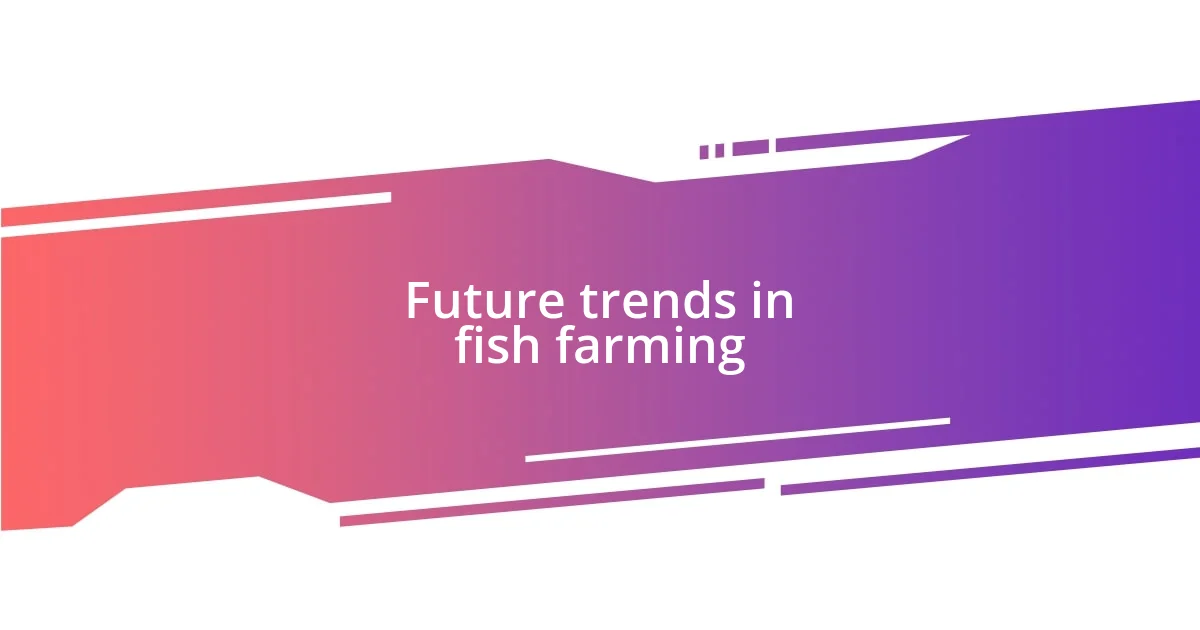
Future trends in fish farming
As I look ahead to the future of fish farming, I can’t help but get excited about the rise of alternative protein sources, such as lab-grown fish. Imagine walking into a restaurant and ordering a delicious fish fillet that was never pulled from the ocean but instead cultivated in a lab. I remember the first time I saw a demonstration of this process; it felt like a scene from a science fiction movie, yet here we are, on the brink of a new era in aquaculture. The potential to reduce overfishing and promote biodiversity is incredibly promising.
Another trend I’m noticing is the increasing focus on local and small-scale aquaculture initiatives. In my travels, I’ve come across several community-based farms that emphasize sustainability while supporting local economies. I once visited a family-run operation where they not only grew fish but also engaged with the community by offering educational programs about sustainable practices. It made me reflect: how can we strengthen our food systems by prioritizing local solutions?
Finally, the impact of climate change on fish farming cannot be overlooked. During a recent discussion with experts in the field, I learned about the urgent need for adaptive strategies, such as breeding species that are more resilient to changing temperatures. I found it eye-opening to realize how interconnected everything is—the health of our oceans directly influences our food security. It’s a poignant reminder that we must stay proactive in protecting our aquatic environments for future generations.

